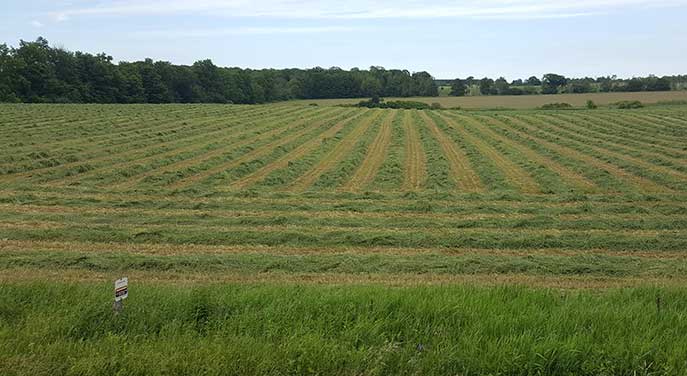 Every year about his time I feel sadness for the many birds and small mammals killed by haying.
Every year about his time I feel sadness for the many birds and small mammals killed by haying.
I know there are many and varied reasons why fields are cut, and I respect that, so please don’t think I am criticizing farmers. Mowing hay fields is a necessary and important part of agriculture.
We forget that this field of lush grass and forbs is actually an agricultural crop. Unlike most crops in Canada, up to three harvests can occur in a single growing season.
But does the cutting have to occur during the height of the breeding season of most field birds, and at a time when most species are in rapid and catastrophic decline?
Haying seasons are classified as early, middle or late. The early and middle haying takes place from mid-May to mid-July in some parts of the country, which, unfortunately, coincides with most of the nesting season for all grassland species of birds.
According to the Ontario Soils and Crop Association, early and middle haying results in the loss of over 90 per cent of all grassland birds that nest in those fields, at a time when the 30 or so grassland species that nest in this habitat are in decline. Bobolinks are down by 88 per cent over the past 40 years, eastern meadowlarks, savannah sparrows and barn swallows are down nearly 70 per cent, and loggerhead shrikes and Henslow’s sparrows, once widespread, are now on the edge of extinction in Eastern Canada at least.
So what can one do?
| RELATED CONTENT |
| Why have we become a nation of litterbugs? By Geoff Carpentier |
| In search of Borneo’s elusive ‘man of the forest’ By Geoff Carpentier |
| California condor back from the brink By Geoff Carpentier |
The obviously answer is to either not mow during the breeding season or mow with the behaviour of the birds in mind. Mowing too early in the season may surprisingly not be the answer as the resulting cut fields may not be suitable habitat when the birds are setting up territories as the grass is too short.
Knowing something about the birds, how they behave and where they like to nest can allow nesting and mowing to coexist. Equally important is knowing what birds are sharing the fields and which ones might be of most concern.
The Ontario Soils and Crop Association has an excellent online publication called Farming With Grassland Birds. I’m not a farmer and don’t profess to understand the intricacies of hay and forage production, but I found this publication very enlightening: it made sense to a layperson like myself.
Using the behaviour of the birds to help decide how to manage fields is paramount. For example, many grassland birds prefer not to nest in smaller fields or fields that are closely bordered by forest edges. They will move to the middle of such fields if possible.
The response from the farmer could be to mow the outer rows of a field in June and early July while waiting until after July 15, when most of the birds are done nesting, to mow the middle. Many grassland birds seldom nest in fields smaller than four hectares (10 acres), or with a minimum width of less than 200 metres. So if the field is small and rectangular, the impact of mowing may be minimal for most endangered species.
Did you know that alfalfa-dominated fields are less desirable to grassland nesting species? Or that meadowlarks will likely re-nest but bobolinks won’t?
The literature doesn’t seem to address another solution that I think could help. Can the mowers be set higher so that at least some cover is left for the birds and small mammals nesting in the fields?
Currently, mowers cut down almost to the ground, so many nests are either trampled by the tractors’ wheels or exposed to the elements. The young may then die of exposure or, more importantly, they become visible to foraging predators, such as gulls, foxes, coyotes, raccoons and others.
There’s much more to learn on the subject. I would encourage anyone interested in helping grassland birds to read Farming With Grassland Birds.
Geoff Carpentier is a published author, expedition guide and environmental consultant. Visit Geoff on LinkedIn, Instagram and Facebook. For interview requests, click here.
The opinions expressed by our columnists and contributors are theirs alone and do not inherently or expressly reflect the views of our publication.
© Troy Media
Troy Media is an editorial content provider to media outlets and its own hosted community news outlets across Canada.


